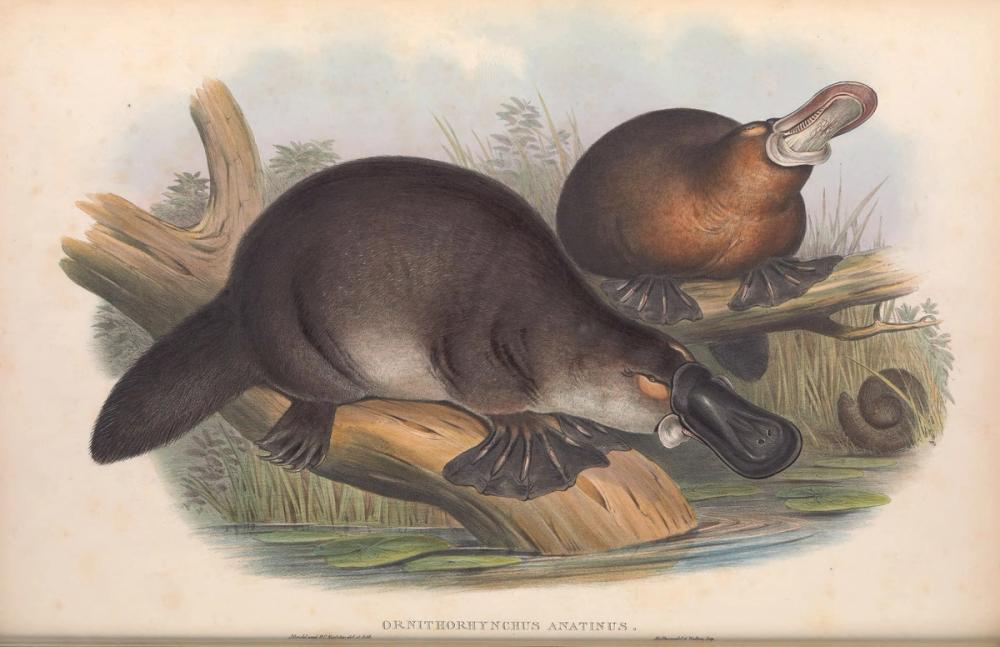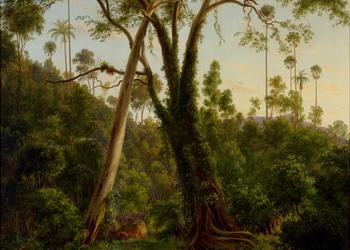
1863 - Platypus, Ornithorhynchus anatinus
John Gould
Coloured lithograph
The Mammals of Australia - Biodiversity Heritage Library
libraryofnature.com
Ornithorhynchus anatinus 1
The platypus (Ornithorhynchus anatinus), sometimes referred to as the duck-billed platypus, is a semiaquatic, egg-laying mammal endemic to eastern Australia, including Tasmania. The platypus is the sole living representative or monotypic taxon of its family (Ornithorhynchidae) and genus (Ornithorhynchus), though a number of related species appear in the fossil record.
Together with the four species of echidna, it is one of the five extant species of monotremes, mammals that lay eggs instead of giving birth to live young. Like other monotremes, it senses prey through electrolocation. It is one of the few species of venomous mammals, as the male platypus has a spur on the hind foot that delivers a venom, capable of causing severe pain to humans. The unusual appearance of this egg-laying, duck-billed, beaver-tailed, otter-footed mammal baffled European naturalists when they first encountered it, and the first scientists to examine a preserved platypus body (in 1799) judged it a fake, made of several animals sewn together.
The unique features of the platypus make it an important subject in the study of evolutionary biology, and a recognisable and iconic symbol of Australia. It is culturally significant to several Aboriginal peoples of Australia, who also used to hunt the animal for food. It has appeared as a mascot at national events and features on the reverse of the Australian twenty-cent coin, and the platypus is the animal emblem of the state of New South Wales. Until the early 20th century, humans hunted the platypus for its fur, but it is now protected throughout its range. Although captive-breeding programs have had only limited success, and the platypus is vulnerable to the effects of pollution, it is not under any immediate threat.
As of 2020, the platypus is a legally protected species in all states where it occurs. It is listed as an endangered species in South Australia and vulnerable in Victoria. The species is classified as a near-threatened species by the IUCN, but a November 2020 report has recommended that it is upgraded to threatened species under the federal EPBC Act, due to habitat destruction and declining numbers in all states.
John Gould 2
Other artwork





